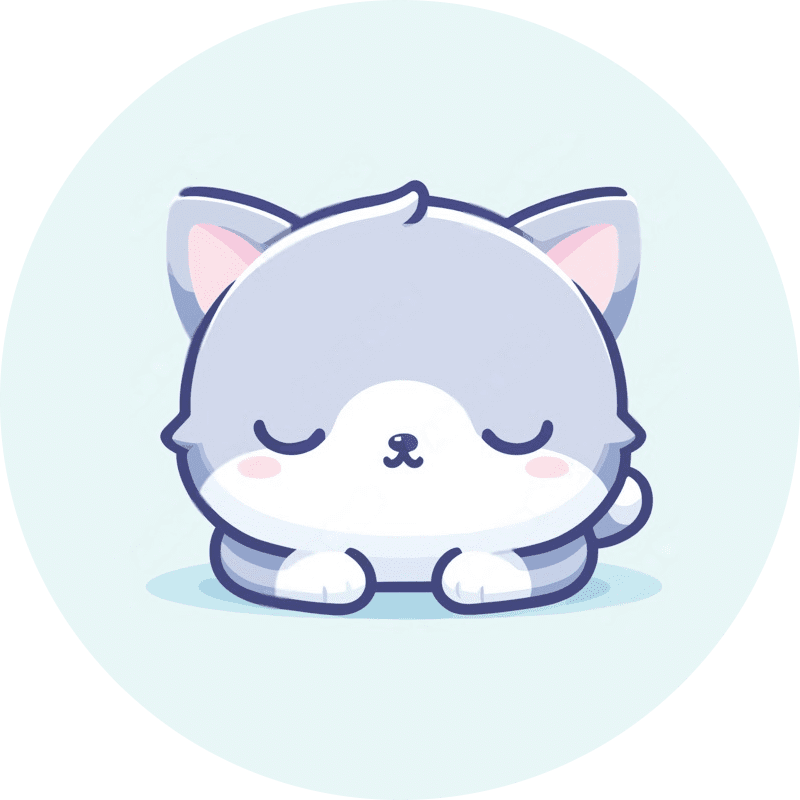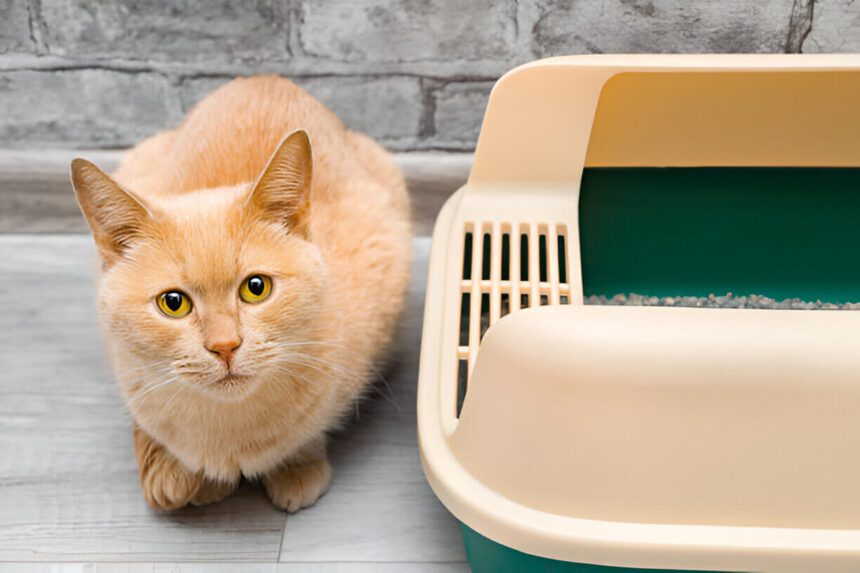As any cat owner knows, our feline friends can be pretty private when it comes to their bathroom habits. We feed them and provide a clean litter box, but what actually happens behind the scenes in their digestive systems is often a mystery. I know I’ve lost count of the number of times I’ve wondered—how long after eating do cats poop?
The timing can vary a lot from cat to cat. Their individual diets, health, stress levels, and more can all factor into how quickly food moves through their digestive tracts. Some cats seem to rush straight to the litter box mid-meal, while others wait patiently for hours.
The Feline Digestive System: A Quick Overview
Understanding how long after eating cats poop starts with a basic grasp of their digestive system. Just like us, cats have a digestive tract that breaks down food, absorbs nutrients, and expels waste. Here’s a rough path food takes through a cat’s body:
Mouth: This is where it all begins. Cats use their sharp teeth and rough tongues to break down food into manageable bits.
Esophagus: Food then travels down this muscular tube to the stomach.
Stomach: Here, food is mixed with digestive juices and partially broken down into a semi-liquid form.
Small Intestine: This is where the majority of nutrient absorption happens. The food mix (called chyme) moves slowly through, allowing nutrients to be absorbed into the bloodstream.
Large Intestine: Finally, the leftover waste moves into the large intestine, where water is absorbed, turning the waste into a more solid form.
Rectum and Anus: Waste is stored in the rectum until it’s time to poop. Then, it exits through the anus.
How Long After Eating Do Cats Poop?

Now that we’ve got the basics covered, let’s get to the main event. How long after eating do cats poop?
The Short Answer: It usually takes about 12-24 hours for a cat to digest food and expel waste. This is because food needs to travel through the entire digestive system, which is about 70 cm long in an average cat.
Do Cats Poop Right After Eating?
Sometimes, yes. You might notice your cat heading to the litter box almost immediately after eating. This doesn’t necessarily mean they’re pooping out what they just ate. Instead, the act of eating can stimulate their gastrointestinal system, causing them to eliminate whatever was already in the pipeline. So, if your cat poops right after eating, it’s more about their system working like a well-oiled machine than the food they just ate.
Why Do Cats Poop Right After Eating?
If your cat seems to poop right after eating every time, you might wonder if this is normal. Short answer: yes. It’s like a reflex for some cats. The act of eating can trigger the colon to contract, which might make your cat feel the sudden need to go. Plus, cats are creatures of habit, and if they’ve established a routine where they eat and then poop, that’s what they’re going to do.
How Soon After Eating Do Cats Poop?
The exact timing can be a bit of a guessing game. But if you’re looking for a general rule, it’s usually a few hours after a meal. So, how long does it take a cat to poop after eating? If your cat eats breakfast, expect them to be looking for the litter box sometime in the early afternoon. For dinner, it might be a late-night visit. But again, this varies from cat to cat.
How Long Does It Take for Cats to Digest Food and Poop?
Cat digestion is pretty efficient, but it’s not lightning fast. It takes about 8 to 10 hours for food to move from the stomach, through the intestines, and out the other end. This is why you might notice a bit of a lag between eating and pooping. But, if your cat eats regularly, their system keeps moving, so you’ll see regular litter box visits.
Can Cats Hold Their Poop?
This might sound like a weird question, but it’s a legit concern for some cat owners. Can cats hold their poop? Yes, they can, but it’s not really healthy for them to do so for long periods. If your cat is regularly holding in their poop, it could lead to constipation or other digestive issues. In some cases, stress or changes in their environment might cause them to hold it in, but this isn’t something you want to encourage.
What About Cats That Poop Less Frequently?
Not every cat is going to poop like clockwork. Some cats have less frequent bowel movements, and that’s okay as long as they’re still regular. If your cat goes once every day or even every other day, but they’re not straining or showing signs of discomfort, this might just be their normal rhythm. But if your cat isn’t pooping at all, or you notice they’re having trouble, it’s time for a vet visit.
How Long After Eating Do Kittens Poop?
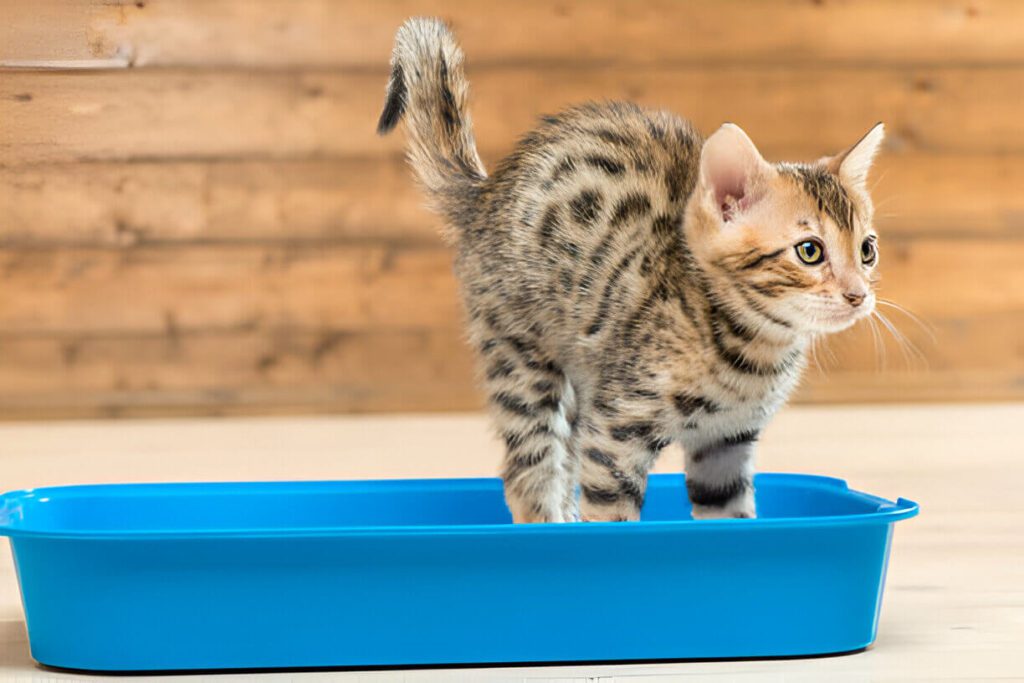
We can’t forget about the little ones. When it comes to kittens, their digestive systems are working overtime. How long does it take for a kitten to poop after eating? Often, it’s a matter of hours. Their tiny bodies process food quickly, so expect frequent trips to the litter box.
Do Kittens Poop After Eating?
Yes, and often! Kittens, especially when they’re very young, will usually poop shortly after eating. If you’re caring for a kitten, be prepared for lots of litter box duty. Their little bodies are like digestion machines, and they need to poop often to keep everything running smoothly.
How Long Does It Take for a Kitten to Digest Food and Poop?
Kittens digest food faster than adult cats. You might see them pooping within 4 to 6 hours of a meal. As they grow older, this will slow down, but for now, it’s a constant cycle of eat, poop, play, sleep, repeat.
Factors That Can Affect Timing of Cat Popping
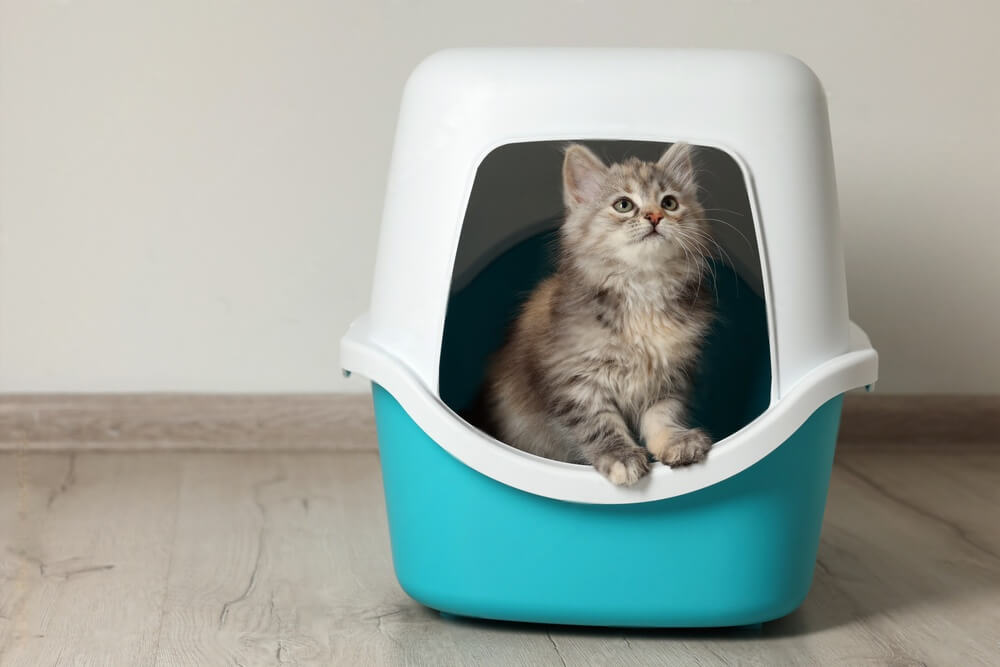
Understanding these factors can help explain the differences you notice in your own cat’s poop patterns.
Diet is a big one. What your cat eats plays a huge role. High-fiber diets can speed things up, while diets high in protein might slow things down a bit. Cats who eat mostly wet food may poop a bit sooner than those on 100% dry kibble. Wet food stays in the stomach a little longer. Fiber content and carb vs. protein levels can also impact transit time.
Hydration matters, too. Dehydrated cats may slow everything down, while well-hydrated ones tend toward the speedier end of the timescale. You’ve likely noticed kitty poops look “healthier” when they drink more water.
Age plays a role as well. As mentioned, kittens poop faster, and elderly cats tend to poop slower due to slower digestive processes. Their motility isn’t what it used to be.
Activity Level: More active cats tend to have quicker digestion. If your cat is lazybones, it might take longer.
Health: Any digestive issues, like constipation or diarrhea, can affect timing. Always consult a vet if you notice drastic changes in your cat’s poop schedule.
Stress, medication, and underlying health problems all have the potential to disrupt what’s typical. Watch for signs of constipation, diarrhea, or other abnormalities that warrant vet attention.
Signs Your Cat Needs to Poop
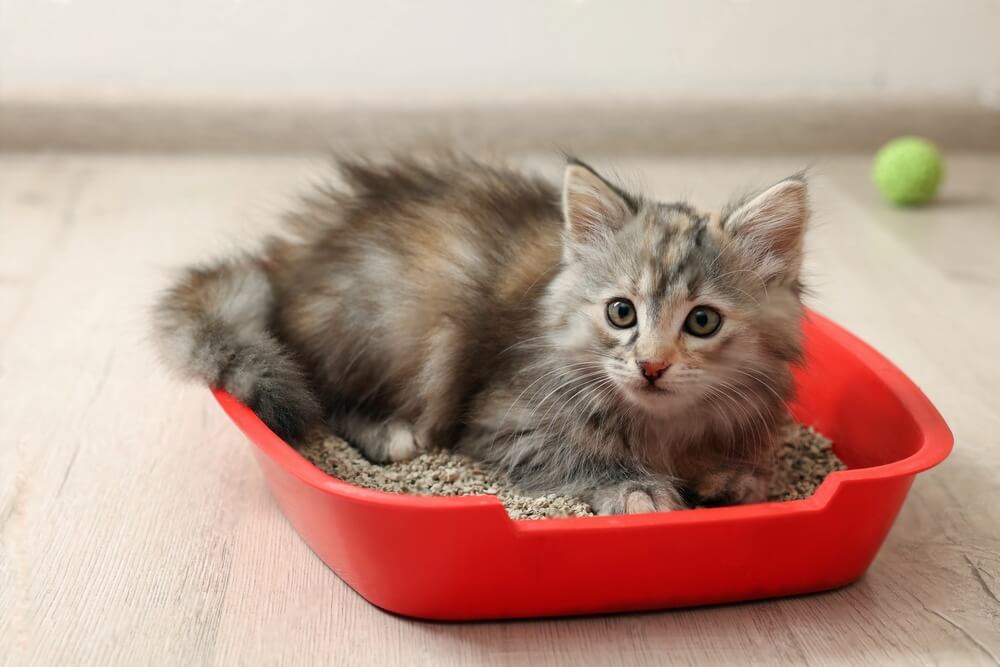
While every cat communicates on their own subtle terms, certain common body language cues can clue us into when they’re feeling potty pressure brewing. Here are a few signs to look out for:
- Tail Elevation: If Spot starts walking around with his tail stuck straight up in the air, he’s usually signaling that a trip to the litter box is imminent. The tail often twitches side to side as well.
- Scratching: Many cats will paw around near their litter box before or after eating when nature’s calling them. My orange tabby, Milo, gets an itchy paw and scratches the floor right outside his box.
- Restlessness: A cat holding a poop may start pacing a bit more than usual or moving around more actively looking for a toilet spot. Watch for signs of discomfort, like licking or nibbling their backside too.
- Searching: If you notice your cat wandering from room to room or exploring potential potty places like under beds more than normal, there could be a dump coming.
Monitoring a Cat’s Normal Poop Routine

Most cats can generally hold their waste for 12–24 hours without issues arising. However, knowing your individual cat’s normal daily routine is still important for monitoring their digestive health and spotting any changes early.
Kittens, as we know, poop frequently, but an adult cat’s average is usually 1-2 times per day. As they get older, some cats plateau once daily without cause for concern.
Paying attention to patterns like how regularly, where in the home, and what time of day they typically go can provide clues if they aren’t adhering to their baseline. Ignoring changes could allow minor issues to progress.
As long as your cat’s poop is soft and well-formed, there’s no need to worry if they sometimes poop a little earlier or later than usual. A bit of flexibility is totally normal.
The key is recognizing deviations from your cat’s personalized baseline and addressing them proactively before anything serious results from infrequent bathroom trips.
Helping a Reluctant Cat Poop
If you notice your cat hasn’t been eliminated in over 24 hours, even though you know they’ve eaten, it’s time to take action. While it’s best not to be too fearful since each cat’s body works in its own way, it’s also not good to ignore signs of possible strain or discomfort for too long. Here are some natural tips to help get things moving:
- Wet Food: Canned food contains more moisture, which may encourage digestion. Try feeding your cat a small spoonful to help things along. The higher moisture content helps soften stools.
- Pumpkin: A tablespoon of 100% plain canned pumpkin (not pie filling) provides beneficial fiber to regulate the GI tract. It works within hours for most kitties.
- Probiotics: Fermented foods like homemade bone broth or small amounts of plain Greek yogurt can rebalance gut flora if stress is causing a stall.
- Massage: Gently massage or rub your cat’s lower back area with circular motions. Mimic how a mother cat would stimulate kittens to eliminate.
- Litter Box: Make sure yours is clean, away from loud areas, and contains their usual type of litter. Stress can zap the urge to potty.
Common Pooping Problems and Solutions
Constipation
Symptoms:
- Straining in the litter box
- Small, hard stools
- Crying or discomfort while pooping
Solutions:
- Ensure your cat is hydrated. Add wet food to their diet if they primarily eat dry kibble.
- Increase fiber intake with special cat foods or supplements.
- Regular vet check-ups to rule out underlying health issues.
Diarrhea
Symptoms:
- Loose, watery stools
- Increased frequency of pooping
- Possible lethargy or loss of appetite
Solutions:
- Keep your cat hydrated. Diarrhea can lead to dehydration quickly.
- Consider switching to a bland diet temporarily (plain cooked chicken and rice).
- Consult your vet if it persists for more than a day or two.
Diet and Its Impact on Digestion
What you feed your cat directly impacts how their digestive system functions. Here are some common types of cat food and their effects:
Dry Kibble
Pros:
- Convenient and easy to store
- Can help keep teeth clean
Cons:
- Lower moisture content, which can lead to dehydration and constipation
- Some kibbles are high in carbs and fillers, which can be hard to digest
Wet Food
Pros:
- High moisture content helps with hydration
- Generally higher in protein and lower in carbs
Cons:
- More expensive and has a shorter shelf life
- Some cats might get picky about flavors or textures
Raw Diets
Pros:
- Mimics what cats would eat in the wild
- High in protein and moisture
Cons:
- Can be challenging to prepare and store safely
- Risk of bacterial contamination if not handled properly
Tips for a Healthy Digestive System
Keeping your cat’s digestive system healthy is key to ensuring they poop regularly and comfortably. Here are some tips:
Hydration: Always have fresh water available. Consider a cat fountain if your cat prefers running water.
Balanced Diet: Feed a diet appropriate for your cat’s age, weight, and health status. Mixing wet and dry food can be a good balance.
Regular Exercise: Encourage play and activity to keep your cat’s digestive system moving.
Routine Vet Visits: Regular check-ups can catch potential issues early.
When to Worry
Sometimes, changes in your cat’s pooping habits can indicate a bigger problem. Here are some signs it’s time to see the vet:
Prolonged Constipation: If your cat hasn’t pooped in over 48 hours, it’s time to call the vet.
Severe Diarrhea: Persistent diarrhea can lead to dehydration and other health issues.
Blood in Stool: Any sign of blood should be checked out immediately.
Behavior Changes: If your cat is acting lethargic, has a loss of appetite, or seems in pain, these could be signs of digestive issues.
Weird Poop Issues
Now, let’s get into some of the weirder things that can happen with cat poop. Because, let’s face it, if you’ve got a cat, you’ve probably seen some strange things in the litter box.
Maggots in Cat’s Poop
Okay, this is gross, but it’s important to talk about. If you ever see maggots in your cat’s poop, don’t freak out, but do take it seriously. Maggots in cat poop usually indicate the presence of intestinal parasites. It’s not something you should ignore, and it’s definitely time for a trip to the vet.
Why Does My Cat Get the Zoomies After They Poop?
The infamous poop zoomies. If your cat goes tearing around the house right after using the litter box, you’re not alone. Many cats do this, and while there’s no definitive answer, it might be because they’re relieved to have gotten rid of that waste, or they’re just feeling frisky. Either way, it’s a normal behavior and nothing to worry about.
Do Cats Eat Poop?
This is something no cat owner wants to think about, but yes, some cats might eat poop. It’s more common in dogs, but some cats do it too. This behavior, called coprophagia, can be due to several reasons, like dietary deficiencies, boredom, or even just curiosity. If your cat is eating poop, it’s time to talk to your vet.
FAQs
How long can cats go without pooping before it’s an emergency?
If a cat hasn’t pooped for over 48 hours, it’s considered a medical emergency. They could develop obstipation, which means the feces have dried out and become rock hard, causing painful constipation. See the vet immediately if your cat is straining to poop or hasn’t gone in two days.
How long can cats go without peeing?
Cats can usually hold their urine for 8-12 hours without issue. But if your cat hasn’t peed at all for over 24 hours, take them to the vet right away, as it could be a serious medical problem like kidney disease or a bladder obstruction. Dehydration is also a risk.
What does it mean if a cat eats but not poop?
If a cat is eating normally but not eliminating, there could be an underlying problem. Stress can cause a cat to withhold stool, but it’s best to rule out any medical causes as well. Take your cat to the vet for an exam to check for potential issues like inflammatory bowel disease, intestinal blockages, or toxins in the diet.
Do cats get constipated?
Yes, cats can experience occasional constipation, just like humans. Common causes include inadequate water intake, stress or anxiety, dietary changes, certain medications, or an underlying illness. Look for signs like straining to poop, hardened, irregular-sized stool, or a lack of bowel movements. Give extra fluids, feed canned food, and use natural laxatives like pumpkin if it’s not too severe. Otherwise, see your vet.
What should a cat’s poop look like?
Ideally, cat poop should be firm but not too hard, in small pieces or round balls, and have a somewhat soil-like consistency. It should not be watery, crumbly, pencil-shaped, or filled with mucus. As long as your cat’s stool remains consistent, forms, and they poop 1-2 times daily, that’s generally a healthy poop pattern.
My senior cat is going less often, is that normal?
Slower digestion and elimination are quite common in older cats, especially around 10+ years of age. As long as stools remain firm and your senior friend seems comfortable, one smaller poop every few days isn’t necessarily cause for concern. Keeping them hydrated and moderately active helps optimize gut motility. Consult your vet if new signs of abdominal pain or blockages develop.
Why does my cat sometimes eat their poop?
Coprophagy, or feces eating, does occasionally happen in cats, though the exact reason isn’t fully understood. Some theories are nutritional deficiencies, social behaviors, stress or anxiety, or medical issues. As long as stools are normal and the cat acts healthy otherwise, it’s usually not harmful. Keeping the litter box scrupulously clean may help deter the behavior. See your vet if other issues are present.
Can cats poop outside the litter box?
Occasional mistakes are normal for kittens still learning or cats under duress. However, consistent elimination from the box requires a prompt vet visit to identify potential causes like illness, inappropriate litter, fear of the box area, inadequate box numbers and locations in multiple pet homes, etc. Proper litterbox placement and health checks are key to avoiding behavioral problems.
Can Food Affect How Long After Eating Cats Poop?
Absolutely. Different foods digest at different rates. Wet food, for example, might move through your cat’s system a bit faster than dry kibble. If you’ve recently switched your cat’s diet and noticed changes in their pooping schedule, that’s likely the reason.
Final Thoughts: How Long After Eating Do Cats Poop?
So, how long after eating do cats poop? The short answer is, it depends. But generally, you’re looking at anywhere from 10 to 24 hours for adults and 4 to 6 hours for kittens. If your cat is pooping immediately after eating, that’s normal too. The important thing is that your cat is pooping regularly, and their poop is healthy. If you ever notice anything unusual, like a drastic change in timing or appearance, it’s best to consult with your vet.
More Ressources
Here are some credible resources that can provide in-depth information about cat digestion and pooping habits:
- American Association of Feline Practitioners (AAFP)
AAFP Website
Provides resources and articles on feline health, including digestive issues and general wellness. - The Cornell University College of Veterinary Medicine
Cornell Feline Health Center
Offers research-based information on various aspects of cat health, including digestion and behavior. - The American Veterinary Medical Association (AVMA)
AVMA Website
A leading authority on veterinary care, including articles and guidelines on feline health and digestive processes.
